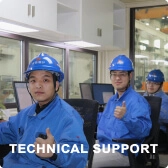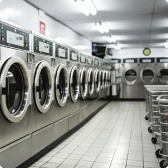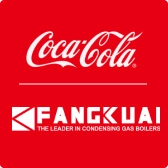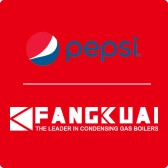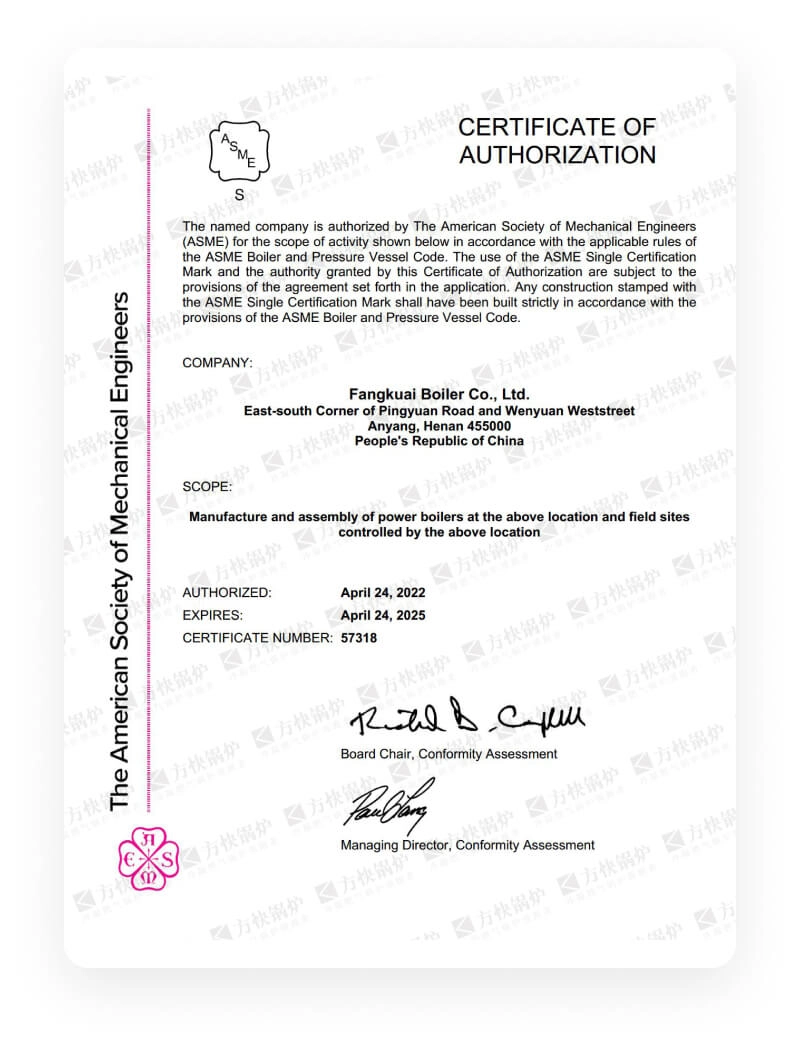Water Tube Boilers: Structure, Advantages, and Applications | Fangkuai Boiler
date: 2024-06-03
Page preview:
Water tube boilers are known for their efficient design and superior performance, particularly in applications requiring high-pressure steam and rapid heat transfer. This type of boiler is widely used in industries such as power generation, chemical processing, and manufacturing, due to its flexibility, safety, and high efficiency. The basic structure of a water tube boiler consists of water-filled tubes surrounded by combustion gases, which is in contrast to fire tube boilers, where hot gases flow through tubes surrounded by water.

Structural Form of Water Tube Boilers
-
General Design: Water tube boilers consist of a series of tubes that carry water, which is heated by combustion gases surrounding them. The structure includes drums, headers, and tubes arranged to facilitate efficient heat transfer and steam generation.
- Drum and Headers: These components are critical to the boiler's operation, with the steam drum providing a space for water to convert to steam. The headers distribute water into the tubes.
- Tubes: Water flows through the tubes and is heated by the hot gases in the furnace, which is located outside the cylinder. The number of tubes and their arrangement directly impact the heat exchange surface area, resulting in more efficient thermal performance.
- Superheaters and Economizers: To further increase efficiency, many water tube boilers are fitted with superheaters (which increase steam temperature beyond the boiling point) and economizers (which preheat the feedwater).
-
Boiler Types: D-type, A-type, and O-type
- D-type Boilers: D-type boilers are the most commonly used water tube boilers due to their flexibility in arranging superheaters and economizers. This type of boiler is well-suited for high-efficiency applications because of its flexible design, which allows for easy modification to meet specific operational needs.
- A-type and O-type Boilers: These are similar in structure to D-type boilers but differ in the arrangement of tubes and drums. Their burners are mounted horizontally, allowing for more straightforward operation and maintenance. The compact design of A-type and O-type boilers, with their smaller width and height, makes them ideal for quick assembly and installation.
- Self-Supporting Angle Tube Design: Some water tube boilers use an angle tube design, which provides additional structural stability. The drum is supported by large-diameter downtubes, which eliminates the need for external frame support, reducing structural complexity. This design also utilizes membrane water-cooled walls, which minimize air leakage and reduce the need for bulky refractory materials.
-
Burners and Furnace: The burner is typically mounted horizontally, which not only simplifies operation but also ensures that the combustion process is efficient. The furnace is positioned outside the cylindrical structure of the boiler, which provides more flexibility in adjusting the furnace size to meet different combustion requirements.
Advantages of Water Tube Boilers
-
High Pressure and Temperature Handling: One of the key advantages of water tube boilers is their ability to handle high pressures and temperatures. Since the water circulates through the tubes and is heated by combustion gases, the system can withstand much higher pressures compared to fire tube boilers. This makes water tube boilers ideal for industries that require high-pressure steam, such as power plants, chemical processing, and oil refineries.
-
Rapid Response and Efficiency: Water tube boilers are known for their quick response to load changes. Their design allows for faster heating of water, thanks to the large contact area of the water tubes. This enables the boiler to adjust more rapidly to fluctuating demands for steam, making them particularly useful in applications with variable load conditions.
-
Compact and Flexible Design: Water tube boilers are generally more compact than fire tube boilers, which is advantageous in facilities with space constraints. The flexible design of these boilers also allows them to be adapted to various industrial needs. For example, D-type boilers can easily incorporate additional components like superheaters and economizers, making them highly versatile.
-
Safety and Reliability: Water tube boilers are safer to operate than fire tube boilers, as they are less prone to catastrophic failure. The smaller volume of water inside the tubes reduces the risk of an explosion, while the external heating of the tubes ensures a more controlled operation. Water tube boilers are also more reliable under high-pressure conditions, making them a preferred choice for demanding industrial applications.
-
Efficient Heat Transfer: Due to the large heat transfer surface area provided by the water tubes, water tube boilers offer superior thermal efficiency compared to fire tube boilers. This results in lower fuel consumption and better fuel-to-steam conversion, contributing to reduced operating costs and improved energy efficiency.
-
Lower Maintenance Requirements: Water tube boilers are easier to maintain than fire tube boilers because they have fewer internal components exposed to the heat and are less likely to accumulate scale or other deposits. Their design minimizes wear and tear, extending the lifespan of the boiler and reducing maintenance costs over time.
-
Environmental Benefits: Modern water tube boilers incorporate advanced technologies such as low-NOx burners and economizers, which reduce fuel consumption and minimize harmful emissions. This makes them an environmentally friendly choice, especially in industries where compliance with environmental regulations is crucial.
Considerations for Water Quality and Maintenance
While water tube boilers offer many advantages, they do have higher requirements for water quality compared to fire tube boilers. The water used in a water tube boiler is heated and converted into steam within the tubes, so if the water quality is poor, it can lead to scale buildup, which reduces heat transfer efficiency and can even damage the tubes. Regular cleaning, maintenance, and monitoring of water quality are essential to ensure the optimal performance and longevity of the boiler.
Conclusion
Water tube boilers offer significant advantages in terms of efficiency, safety, and flexibility. Their ability to handle high pressures and temperatures, along with their superior heat transfer capabilities, makes them a popular choice for large-scale industrial applications. The compact design, coupled with easy operation and maintenance, ensures that these boilers are cost-effective and reliable in demanding environments. Whether in power generation, chemical processing, or other industries requiring high-efficiency steam generation, water tube boilers provide an ideal solution for meeting diverse operational needs.


